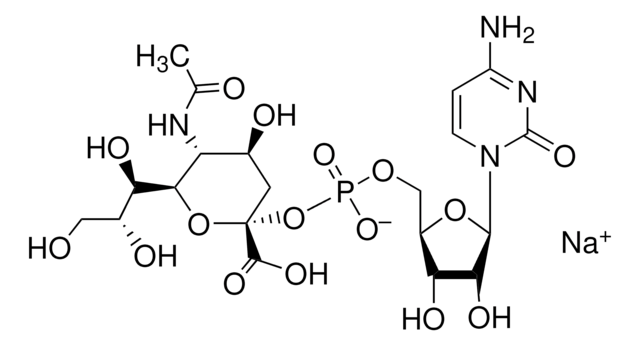D6000
2′-Deoxyadenosine 5′-diphosphate sodium salt
Synonym(s):
dADP
About This Item
Recommended Products
biological source
synthetic (organic)
assay
≥95% (HPLC)
form
powder
storage temp.
−20°C
SMILES string
[Na].Nc1ncnc2n(cnc12)C3CC(O)C(COP(O)(=O)OP(O)(O)=O)O3
InChI
1S/C10H15N5O9P2.Na.H/c11-9-8-10(13-3-12-9)15(4-14-8)7-1-5(16)6(23-7)2-22-26(20,21)24-25(17,18)19;;/h3-7,16H,1-2H2,(H,20,21)(H2,11,12,13)(H2,17,18,19);;
InChI key
KZGAPWRJMWSNQO-UHFFFAOYSA-N
General description
Application
signalword
Danger
Hazard Classifications
Acute Tox. 3 Dermal - Acute Tox. 3 Inhalation - Acute Tox. 3 Oral - Eye Irrit. 2 - Skin Irrit. 2 - STOT SE 3
target_organs
Respiratory system
Storage Class
6.1C - Combustible acute toxic Cat.3 / toxic compounds or compounds which causing chronic effects
wgk_germany
WGK 3
ppe
Eyeshields, Faceshields, Gloves, type P2 (EN 143) respirator cartridges
Certificates of Analysis (COA)
Search for Certificates of Analysis (COA) by entering the products Lot/Batch Number. Lot and Batch Numbers can be found on a product’s label following the words ‘Lot’ or ‘Batch’.
Already Own This Product?
Find documentation for the products that you have recently purchased in the Document Library.
Customers Also Viewed
Our team of scientists has experience in all areas of research including Life Science, Material Science, Chemical Synthesis, Chromatography, Analytical and many others.
Contact Technical Service












